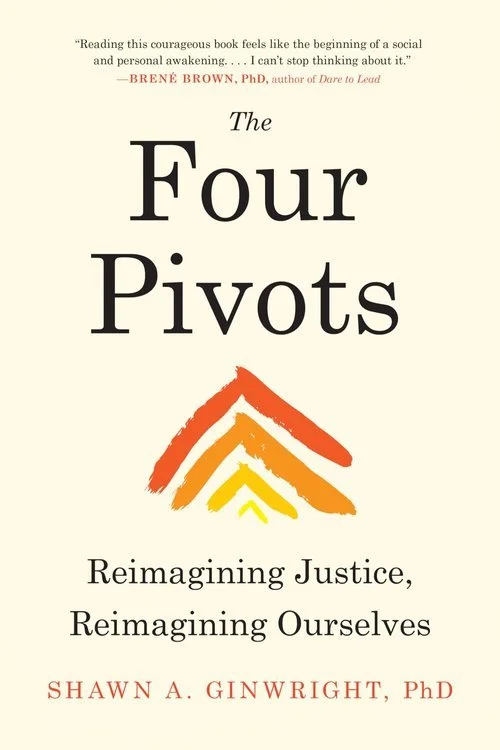Building with Integrity in a Burnout Economy
Harvey & Smith Impact founder Larry Blake Harvey reflects on the hidden roots of burnout and the cost of staying in misaligned spaces.
In this personal piece, Larry shares what it’s taken to realign his work with care, clarity, and mutual respect—especially in spaces that say the right things but act otherwise. If you’ve ever been celebrated for your commitment yet sidelined in decision-making, this one’s for you. It’s a call to honor your own boundaries, even when the mission looks good on paper.
There’s a particular kind of exhaustion that comes from doing work you care deeply about in spaces that don’t fully see you. It’s not just about deadlines or deliverables. It’s about the quiet, persistent weight of having to prove your value in environments that speak the language of justice but hesitate to practice it.
Recently, I’ve been reflecting on a few consulting relationships that didn’t unfold the way I expected. In some, I was welcomed with excitement but later met with hesitation when I offered honest feedback or pushed for clarity. In others, the internal culture fell short of the values displayed on the website. And there were times when the dynamic shifted once I started advocating for better communication and structure. None of this was extreme. But added together, these moments reminded me of how easy it is to lose yourself in work that doesn’t reflect who you are.
Burnout doesn’t always come from doing too much. Sometimes it comes from staying in rooms where alignment is missing, even if the mission sounds right.
Listening to What Misalignment Reveals
There is wisdom in noticing what no longer feels good. When something is off, the discomfort often arrives before the clarity. Over time, I’ve learned to take those moments seriously—not as failures, but as feedback.
As a consultant, I approach my work with professionalism, flexibility, and care. I want to help organizations grow in ways that are meaningful and sustainable. But I also know I can’t do that if the foundation of the partnership is shaky. When I notice patterns of avoidance, control, or resistance to honest dialogue, I pause. That pause is where I begin to re-ground myself. I’ve learned that staying too long in misalignment comes at a cost I’m no longer willing to carry.
I’ve started moving more intentionally in how I accept new opportunities. I’m focused on partnerships that feel reciprocal, transparent, and rooted in shared values. I’m reaching out directly to organizations that I admire and being more open about what I’m looking for in return. This kind of alignment isn’t a luxury. It’s the only way to build work that lasts.
Choosing Wholeness Over Hustle
I’ve been thinking a lot about how we define leadership—and how often that definition centers exhaustion. There’s a cultural norm in this sector that says being “good” means being available all the time, absorbing stress, or constantly producing. But I believe leadership looks different.
Leadership is about discernment. It’s about knowing what you need in order to show up with integrity, and giving others permission to do the same.
One book that has helped me put language to this is The Four Pivots by Dr. Shawn Ginwright. It offers a model of leadership that centers healing, presence, and systems-level awareness. He challenges readers to shift from lens to mirror, from hustle to flow, from problem-solving to possibility, and from transactional relationships to deep connections. These pivots are not theoretical—they are practical tools that have helped me reshape my approach to work, to clients, and to myself.
In my own practice, I’m learning to build slower but stronger. To pause before saying yes. To choose clarity over urgency. And to remember that sustainable change doesn’t come from pushing harder—it comes from moving with purpose.
A New Standard for Partnership
The more I reflect, the clearer my standard has become. I want to work with people who communicate directly, who see partnerships as collaborative, and who are not afraid of the real work that justice requires. I’m not looking for perfection. But I am looking for trust, transparency, and alignment.
That clarity is shaping how I lead, how I write, and how I serve. I no longer say yes just because a project looks good on paper. I want to feel good in the work—not drained by it.
If you’re navigating similar questions in your own work, I hope this serves as a reminder that you’re not alone. You don’t have to settle for environments that keep you small. You don’t have to accept a definition of leadership that erases your well-being. And you don’t have to build in isolation.
Here are three questions I return to before stepping into new work:
Does this relationship feel mutual?
Are the values visible in the culture, not just the messaging?
Will I be able to show up fully and be respected in return?
If you're building something aligned and want to explore a partnership, I’d love to hear from you.


